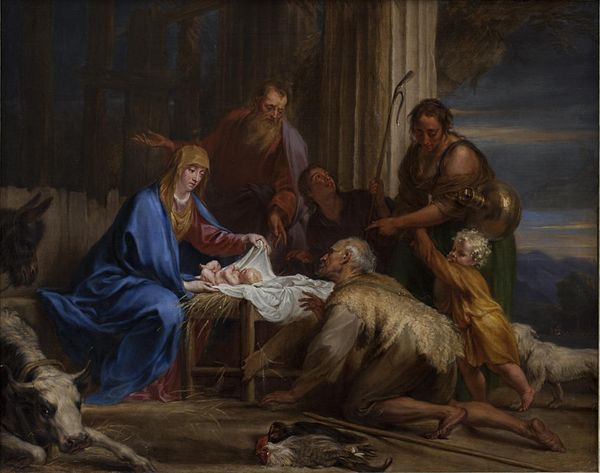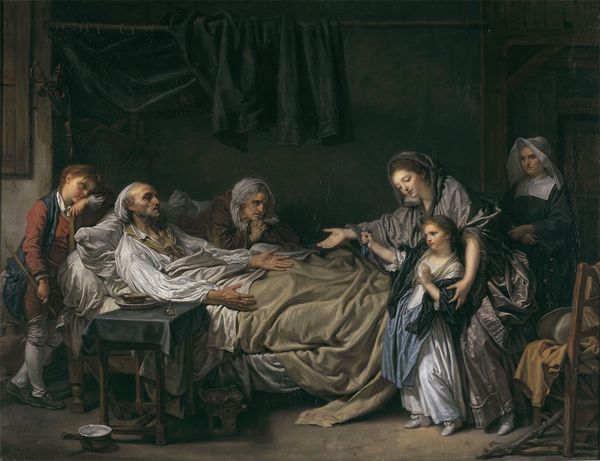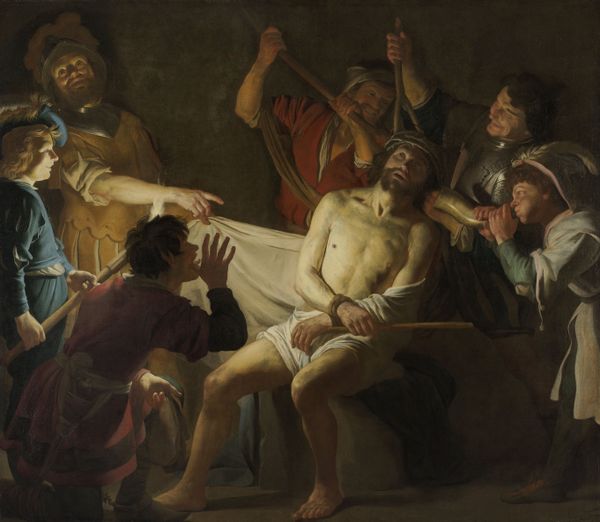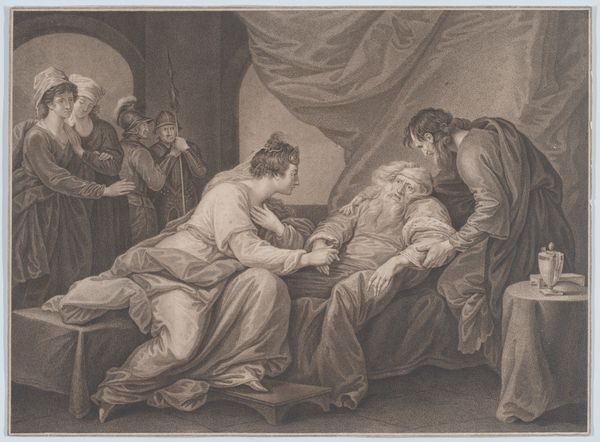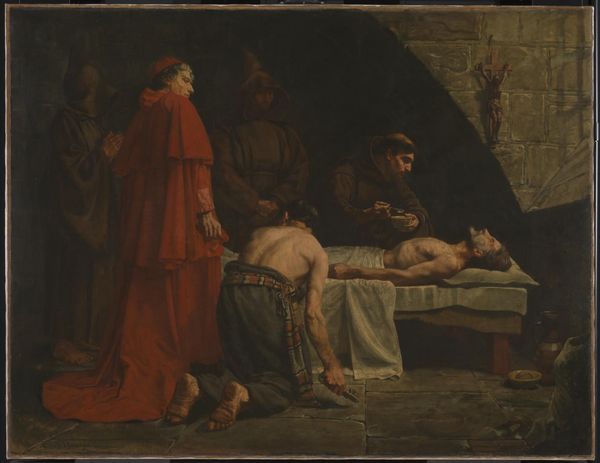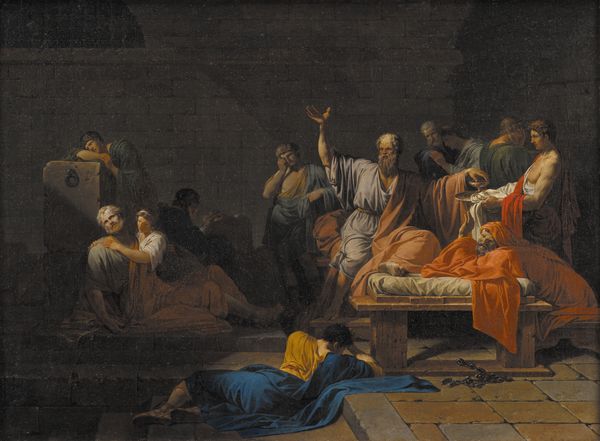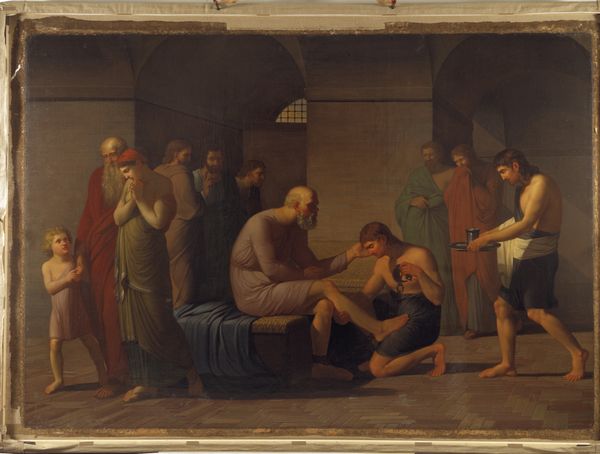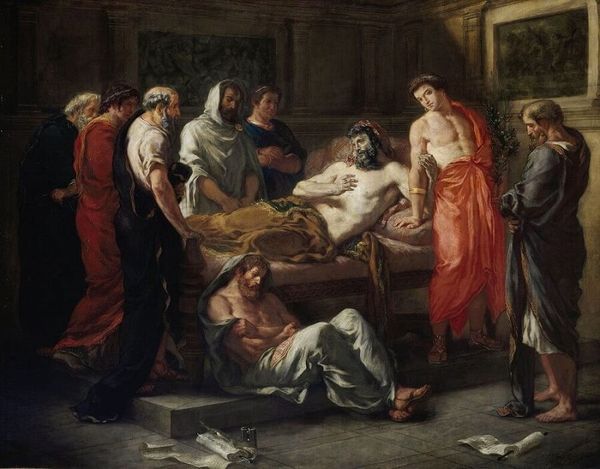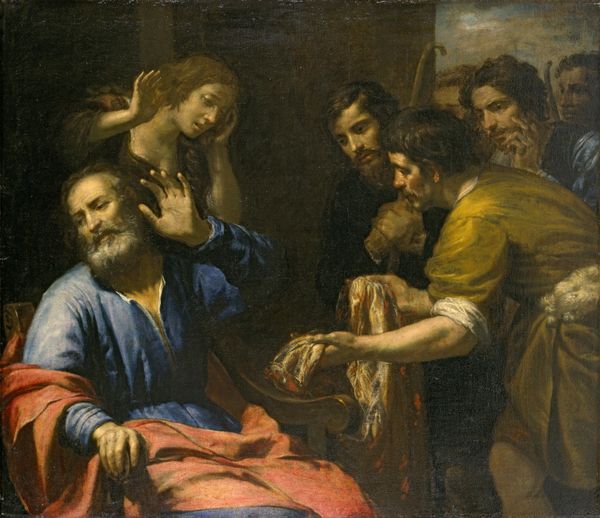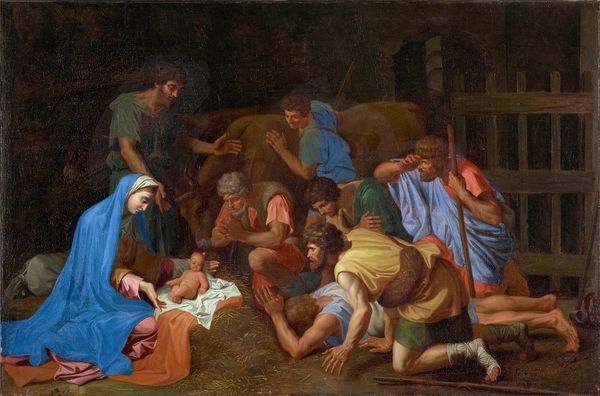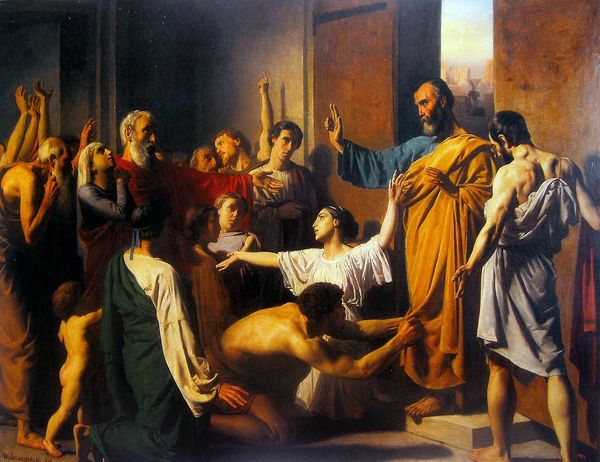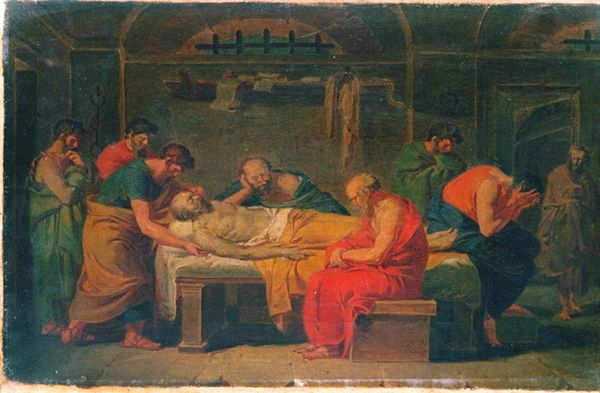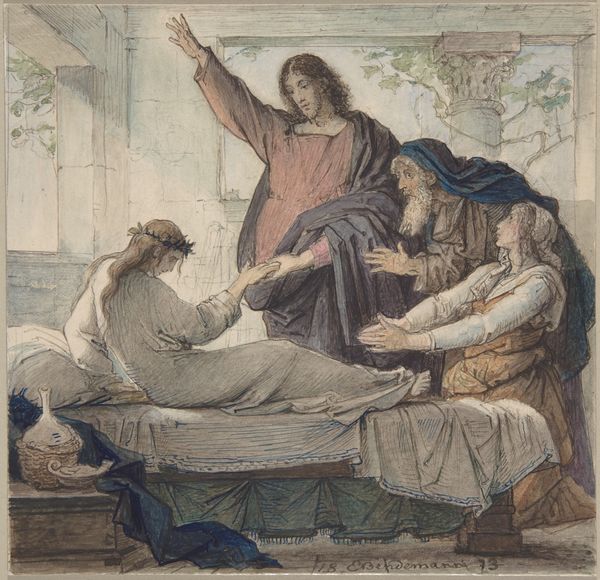
Dimensions: support: 2414 x 2990 mm
Copyright: CC-BY-NC-ND 4.0 DEED, Photo: Tate
Curator: This is Henry Thomson's "The Raising of Jairus' Daughter." What strikes you most about it? Editor: It's quite large, and the scene feels very theatrical. I'm curious, what is the historical context of depicting women this way, as passive and needing to be saved? Curator: The painting reflects a patriarchal societal structure where women's agency was suppressed, their roles often confined. Thomson's representation invites us to examine how power dynamics shaped artistic narratives, perpetuating gender stereotypes and limiting female representation. Editor: So the painting isn't just a religious scene, but also a reflection of societal norms at the time? Curator: Precisely. It's crucial to analyze the painting through an intersectional lens, considering gender, class, and the religious implications of a woman being brought back to life by a male figure. It prompts us to question whose stories are being told and whose are being silenced. Editor: That gives me a lot to think about regarding not only this painting, but also the art of that era. Curator: Indeed. Remember, art is never created in a vacuum.
Comments
tate 7 months ago
⋮
http://www.tate.org.uk/art/artworks/thomson-the-raising-of-jairus-daughter-t13558
Join the conversation
Join millions of artists and users on Artera today and experience the ultimate creative platform.
tate 7 months ago
⋮
This large painting was first exhibited at the Royal Academy in London in 1820. It shows a scene from the life of Christ. Jairus was a leader of the synagogue whose daughter lay dying. Jairus appealed to Jesus for help, and despite the scepticism of the mourners in attendance the child was returned to life. Jairus’s daughter is placed at the centre of the canvas, prepared for burial. The painting is a rare example of large-scale religious art by a British artist. It was created in an academic style indebted to the examples of 16th and 17th-century Italian and French art. Gallery label, February 2016
